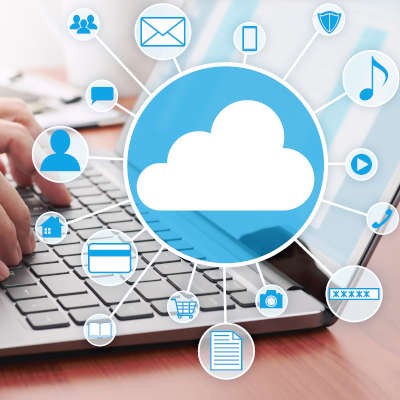Five months into the COVID-19 pandemic, many businesses have resolved to shift their operations and replace a lot of their onsite computing hardware with cloud solutions. While the cloud has proven to be a great method for businesses to obtain the resources they need without investing in the associated costs of a hardware refresh, its other costs could prove problematic. Let’s examine your options briefly and try to establish a sense of value.
Cerberus IT Solutions Blog
A lot of people didn’t take the novel Coronavirus seriously when it was first discovered outside of China in late February. Now four months later, as the pandemic rages on, people continue to work from home, have their hours cut, or be completely out of a job. For the business owner, this period has been filled with difficult decisions, including halting all major IT projects. If your business is looking for a solution to help them add the technology they need at a price that works for this period, here are three useful options.
When it comes to your business, especially its technology, some of the buzzwords you hear floating around can be pretty convincing, almost intoxicating. Unfortunately, like most buzzwords, many of these are aggrandized beyond their worth to the average small-to-medium-sized business. Let’s take a look at how this can impact a business’ perception of its cybersecurity, as well as dig into the reality behind these terms.
There is a saying that you hear a lot in business: Plan for the worst, hope for the best. This is typically related to data redundancy, cybersecurity, or one of any other proactive steps a business should take to control the continuity of their business. What happens when you plan for the worst, but the best comes to fruition? What happens when your business consistently meets demand, prospers without issue, and grows quickly? Today, we will take a look at some issues the small business owner has to deal with when his/her business isn’t so small anymore.
With the development of business technology, tools have been introduced that provide greater and greater benefits to organizations that use them. Perhaps the most useful that we have today, the cloud, has enabled businesses of all sizes to take advantage of far better tools than were available to them before. Let’s take a closer look at some of them.
The COVID-19 outbreak has been a trying time for businesses and individuals, alike. Not much positive has come from it, as people, who typically band together in times of unease, are asked to stay away from each other. This has led to many people turning to their smartphones and Internet connections to communicate with the people they hold dear. With a national reliance on Internet connections there have been some new voices (and some familiar ones) advocating for the return of net neutrality. Today, we’ll remind you what net neutrality is and why this situation has people calling for a change.
At this point, it’s hard to believe that anyone needs to be told that cybersecurity is important, but some organizations are still doing the bare minimum to protect their network and data. That can’t go on forever. Today, we thought we would discuss how to put together a cybersecurity policy that covers all the bases, and will give you the peace of mind that you are actively combating today’s most present threats to your network, infrastructure, and data.
If you are a subscriber of this blog, you know that each week we create content that aims to educate people about the value of managed services and the growing importance of information technology. Today, we thought it would be useful to put together a glossary of some terms that we regularly use to ensure our readers understand what we are referencing.
If you were asked to describe your average tech support experience, chances are that you remember a time when you had to either wait around for the technician to come around, dealing with downtime the entire time; or, worse yet, unplug your technology and schlep it across town to the break/fix store only to be told that it may be done in the next few days (code for over a week). Today, we’ll tell you how managed IT services can keep you from playing the waiting game.
Over the past two decades, business technology was largely separated between information technology (IT)--that is, the business’ computers, networking equipment, and peripherals--and operational technology (OT): all other technology. As IT advanced, so has OT, which today presents many of the same risks that IT always has. Today, we will take a look at how to secure your business by focusing on where your IT meets your OT.
Your business is always looking for ways to improve its operations. The more efficiently you do business, the more productive your company will be. To accelerate this growth many businesses look to information technology to build that added efficiency. Today, we will go over when you should consider upgrading your systems, and what benefits you can see from doing so.
There are a lot of benefits of moving your business to the cloud. Typically, we promote the reduction in capital expenditures, the 24/7 availability, and all the other features you can gain. The cloud is a useful tool for all types of business computing functions. Today, large sections are moving their business to the cloud, but is it really right for you? Let’s look at how cloud computing can potentially be detrimental for your business.
If there is any computing device that has fully entered the mainstream, it’s the smartphone. This means that there is public demand for the best - and manufacturers pay attention, regularly rolling out better and better phones (at least, that’s the plan) all the time. As the new year rolls around, many are using the holidays to get themselves a little something for 2020.
Properly managing and maintaining a relationship with clients, customers, and contacts is a critical part of any business, especially if the business in question is actively working to grow. This is what makes a customer relationship management system, or CRM, so useful. Let’s review a few of the signs that your business needs a CRM to stay organized.
Most businesses make technology decisions with an eye on growth. One technology that is being used more than ever is cloud computing. There are many different benefits that an organization can see by using the cloud. Today, we will address these benefits and explain how cloud computing works to facilitate business growth.
Conferencing software is bringing a whole new angle for businesses to communicate with staff and clients, alike. This is shifting the way companies do business; and, with this newfound freedom, they are expanding their reach and being more efficient. Let’s take a look at the features that come with the best conferencing solutions and how they help businesses improve their operations.




















